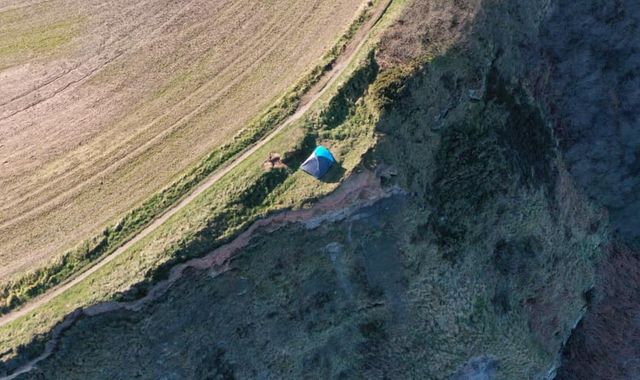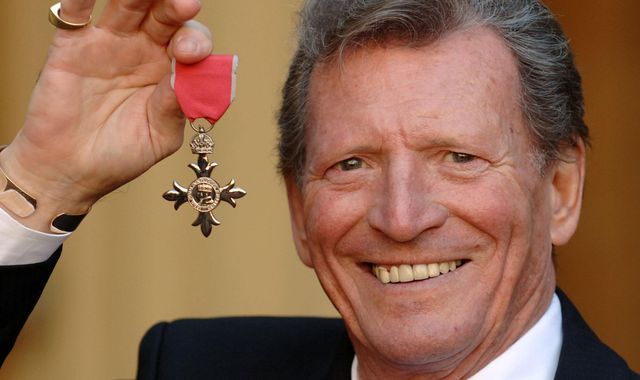Everything we know about the death of Diana, Princess of Wales
Written by News on 28/08/2017
Diana, Princess of Wales died on 31 August 1997, after a car she was travelling in crashed in the Pont de l’Alma tunnel in Paris.

Why was Diana in Paris?
Diana was in the French capital with Dodi Fayed – the son of former Harrods owner Mohamed Al Fayed.
The couple had been dating for a few weeks, and were planning to spend one night at Dodi’s father’s Hotel Ritz Paris before heading back to London.
The pair had flown into Le Bourget airfield in Paris from Sardinia earlier that day, having spent nine days together on Mohamed Al Fayed’s yacht – Jonikal – on the French and Italian Riviera.
They had intended to go to a restaurant for dinner that evening, but due to the high level of paparazzi interest in their movements, they changed their plans.
The night of the accident
Instead, the couple decide to head to Dodi’s apartment in Rue Arsene Houssaye, a short distance from the hotel, just off the Avenue des Champs-Elysees
The last-minute decision to change plans meant that the hotel’s acting security manager, Henri Paul, was called back to the hotel to chauffeur them.
He had been off-duty for three hours and had drunk two double shots of a licorice-flavored aperitif called Ricard – the equivalent of four single shots of whisky – at the hotel bar before getting into the car.
Diana’s two bodyguards left in a decoy car from the front of the hotel as an attempt to divert photographers.
At the hotel’s rear entrance in rue Cambon, Diana and Dodi got into the back of a hired 1994 black Mercedes-Benz S280.
The Mercedes was driven by Paul, and they were accompanied by Dodi’s bodyguard Trevor Rees-Jones who sat in the front passenger seat.
As they left the hotel, Paul is reported to have said to paparazzi: "Don’t try to follow us – you won’t be able to catch up".
The crash
It was a four-minute drive from the hotel to the Pont de l’Alma tunnel.
As the car approached the underpass it was travelling at around 65mph – double the speed limit.
Inside the tunnel, the Mercedes clipped a white Fiat Uno, before veering left, right, then finally left on the two-lane carriageway, smashing into the 13th pillar of the tunnel.
The car hit the corner of the pillar, meaning that it was unable to crumple – and so absorb the kinetic energy of the crash – as it was designed to.
A collision investigator later described the narrow point of impact as "supremely unlucky".
The car then spun and hit the stone wall of the tunnel backwards before coming to a stop.
Fatalities
A French doctor who was driving through the tunnel was one of the first people on the scene, calling the emergency services and giving an initial medical assessment.
He described Diana as unconscious, but breathing. He reported just a few drops of blood on her forehead, but said her face appeared otherwise uninjured.
Dodi Fayed and Henri Paul were pronounced dead at the scene.
Diana was treated for nearly 40 minutes by the ambulance medical team at the scene of the crash, before being driven to Pitie-Salpetriere hospital.
Accompanied by several police motorcyclists, the ambulance had to travel slowly due to the nature of Diana’s injuries, and at one point had to stop while her condition was stabilised.
She was unconscious when she arrived at the hospital, and went into cardiac arrest at around 2.10am.
Diana was pronounced dead at 4am on the morning of 31 August 1997, aged 36.
Dodi’s bodyguard, Trevor Rees-Jones, was the only survivor. Due to serious head injuries, he remembered very little about the crash.
The French judicial investigation
The 18-month French judicial investigation concluded in 1999 that Diana’s death was caused by the chauffeur’s high-speed driving under the influence of alcohol and drugs.
Blood tests later showed he was two times the UK drink-drive limit.
The combination of alcohol, the anti-depressant Prozac and Tiapridal – used to counter alcohol dependency – was ruled to have left him in "a state that prevented him from keeping control of his vehicle when he was driving at high speed."
The report also noted that the Mercedes had clipped a white Fiat Uno as it entered the underpass. The car was never traced.
Press photographers following the car were not found to have caused the crash.
The report stated that both Diana and Fayed would have survived the crash had they been wearing safety belts.
Operation Paget
In 2004 the Metropolitan Police began a criminal investigation called Operation Paget, examining the various conspiracy theories surrounding Diana’s death.
The inquiry was legally necessary, and was requested by the coroner after the inquests into the deaths began.
The then Metropolitan Police Commissioner, Sir John Stevens, retraced Diana’s final journey during the investigation.
He commented that the "massive impact" from the blow was still visible in the pillar of the Paris underpass.
Accident Investigation experts from Transport Research Laboratory (TRL) assisted the police enquiry.
In the report, collision investigator Anthony Read noted that Paul had lost control of the Mercedes well before the entrance to the tunnel.
He said the collision with the white Fiat occurred after the loss of control, and so was irrelevant, and not the cause of the crash.
It also found that none of the occupants of the car were wearing a seatbelt. They found no faults with the seatbelts within the vehicle.
The report concluded that the deaths were the result of a tragic accident.
The British inquest
A British inquest was opened in 2004 but was immediately adjourned by the royal coroner so that he could examine the 6,000-page document compiled by the French authorities during their investigation.
The inquest was re-started in 2007, concluding in 2008 after six months of evidence.
Unlike the French investigation, blame was cast on the paparazzi as well as driver Paul Henri.
A verdict of "unlawful killing" due to the "gross negligence" of driver Henri Paul and the paparazzi was returned.
The jury also said "the impairment of the judgement of the driver of the Mercedes [Henri Paul] through alcohol" and the fact that none of those who died were wearing seatbelts had contributed to the deaths.
The man widely believed to have been the driver of the white Fiat clipped by the Mercedes – a French-Vietnamese taxi driver called Le Van Thanh – could not be compelled to give evidence in a British court as he was a French citizen.
Coroner Lord Justice Scott Baker ruled out the possibility of concluding that the couple were murdered due to insufficient evidence.
Where is Diana buried?
Following Diana’s death there was a public outpouring of grief like no other before.
More than a million people lined the route of her funeral from Kensington Palace to Westminster Abbey on 6 September 1997.
Her coffin left Kensington Palace on a gun carriage, with her brother Charles Spencer, the Duke of Edinburgh, her two sons – Prince William and Prince Harry – and her former husband Prince Charles, walking behind.
The globally televised funeral was watched by 2.5 billion.
After the ceremony, Diana was driven 77 miles to her family’s Althorp estate in Northamptonshire, where she was buried on an island in an ornamental lake.
While the precise location of her grave has never been made public, 36 oak trees have been specially planted in the estate grounds – one for each year of her life – along with hundreds of white water lilies and roses.
(c) Sky News 2017: Everything we know about the death of Diana, Princess of Wales





